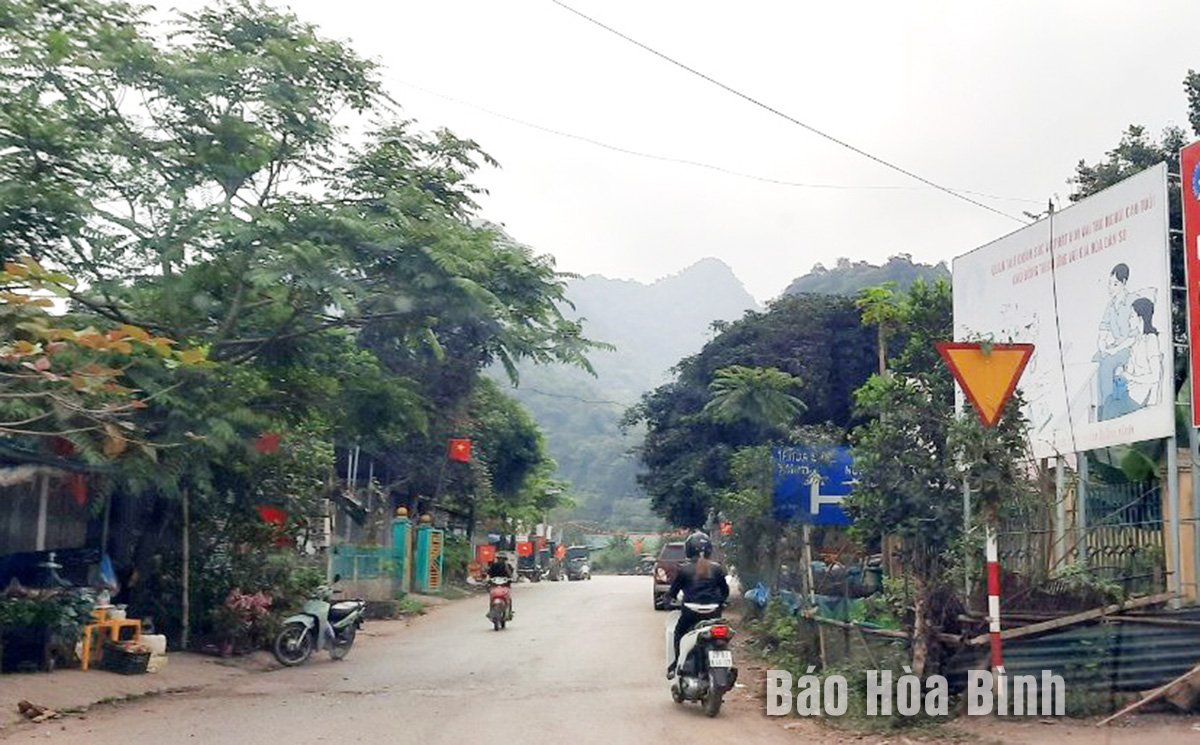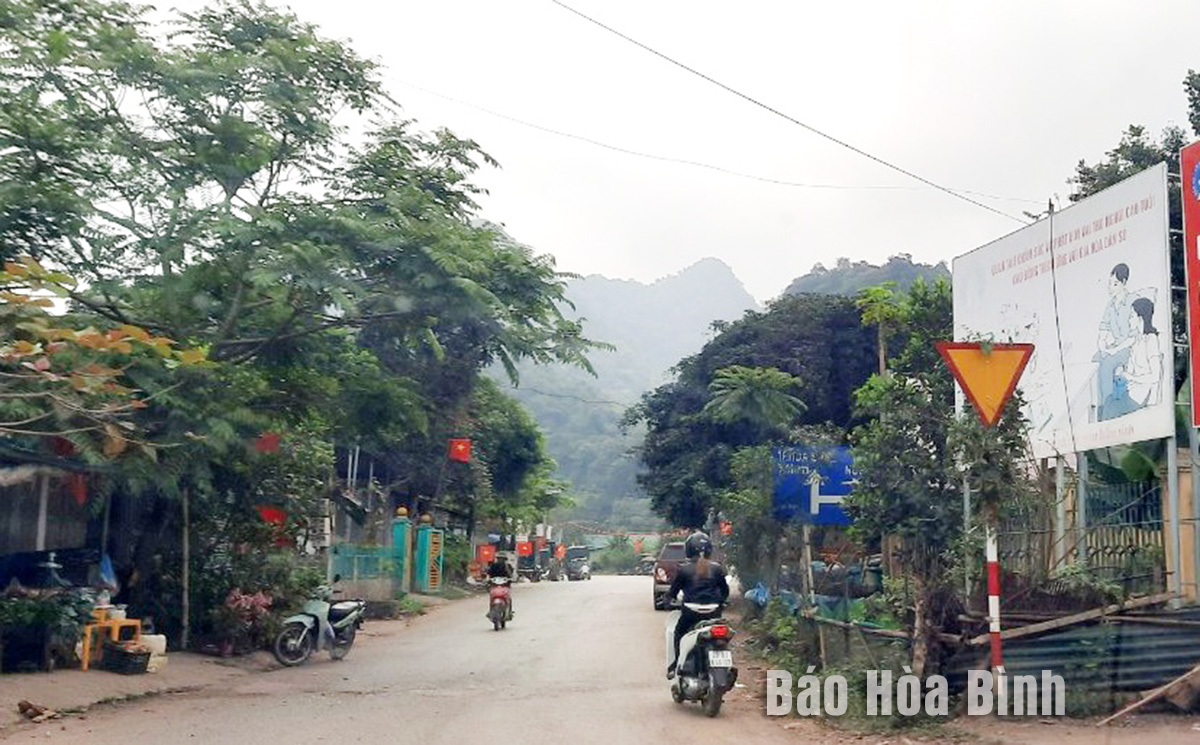
In recent years, Thung Nai commune on has undergone significant changes in its appearance, landscape, and lives of local residents. Road 435 from Hoa Binh City to Tan Lac district’s Suoi Hoa commune, passing through the Thung Nai commune, has helped attract many tourists to the area.
Investment has been poured into transportation infrastructure in Thung Nai commune (Cao Phong district), contributing to speed up local socio-economic development.
According to Bui Van Thoa, Secretary of the commune's Party Committee, the commune has 160 party members in nine party cells.
Recently, the commune’s party committee and local administration have innovated their operation methods, focusing on assessing the capabilities of officials, party members, and civil servants through their implementation of political tasks. Currently, 100% of commune officials and civil servants hold university degrees, meeting the job requirements. Especially, the commune underlined the need to enhance the quality of party cell activities, actively innovating leadership methods, gradually improving working regulations, and promoting the pioneering and exemplary role of officials and party members in fulfilling political tasks. Most officials and party members have led the way in implementing policies, striving to complete tasks, and participating in production and new life development movements.
Thanks to the efforts of local Party Committee, administration, and residents, positive changes have been recorded in many aspects.
The commune has focused its leadership on restructuring crops and livestock, promoting the development of trade and services. Regarding agriculture, local residents have shifted to cultivate high-value crops such as oranges and pomelos. In 2023, pomelo grown by Thung Nai Commune cooperative group met VietGAP standards. The group signed a contract with the 3T Cooperative to ensure sales of the product.
The commune has 143 households operating in tourism, of which 43 engage in trading, 89 in transportation and 11 in catering business. Locals have proactively invested in passenger transport, aquaculture, and food services to serve tourism in the Hoa Binh lake area. Many households in villages surrounding the lake, such as Moi, Nai, and Tien, have poured capital in aquaculture and provided tourism services, thus becoming better off.
Responding to emulation movements and the National Target Programme for new-style rural development, local people actively donate land and contribute labour to build roads, welfare facilities and upgrade village roads. With the concerted efforts of the political system, the commune’s poverty rate based on new criteria dropped to 5.45% and the average income per capita reached 43.6 million VND (1,710 USD) last year.
The emulation movement "Hoa Binh joining hands to build new-style rural areas” has been widely spreading, becoming a driving force that motivates the localities to renew rural landscapes and improve the material and spiritual lives of the residents. In this movement, the people play a central role-both as the main implementers and direct beneficiaries of its outcomes.
In response to the global digital revolution, Hoa Binh Newspaper is transforming itself into a modern and multi-platform media hub, blending cutting-edge technology with a restructured newsroom and a new generation of tech-savvy journalists.
Hoa Binh province’s Association of the Elderly recently held a conference to review the project on expanding the inter-generation self-help club model until 2025.
In a move to implement Resolution No. 57-NQ/TW, issued on December 22, 2024 by the Politburo, which targets breakthroughs in science-technology development, innovation, and digital transformation, the Hoa Binh provincial Department of Health has issued a plan to roll out the "Digital Literacy for All” campaign within the local health sector.
An Nghia Commune (Lạc Sơn District) is one of the communes that achieved the tha standard of the national new rural area in 2018. Entering a new development phase, the commune is now trying to meet the criteria for the advanced new rural development. With the strong political will and the public consensus, the commune is gradually overcoming the challenges to reach this goal, aiming for the sustainable development.



